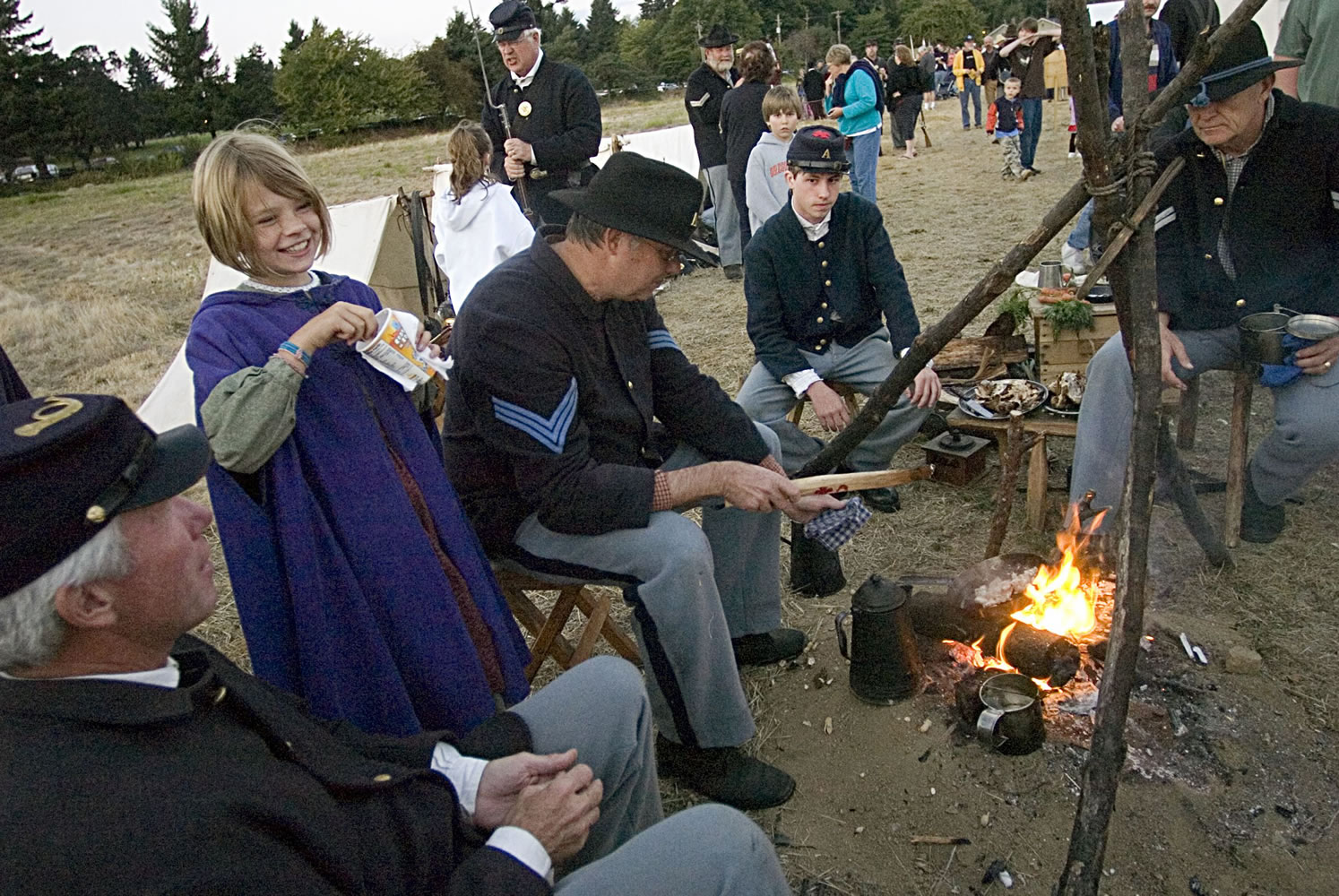o What: 30th annual Campfires and Candlelight event, featuring 150 re-enactors presenting life at the Fort Vancouver National Historic Site during different time periods and inside the fort’s stockade walls.
o When: 4 to 10 p.m. Sept. 14.
o Where: Fort Vancouver National Historic Site, 1001 E. Fifth St.
o Cost: Free.
o Information: 360-816-6230.
As the sun sets to the west of Fort Vancouver, the glow of campfires will light a path through camps of pioneers, Army men, Russian pilots and Hudson’s Bay employees. Think of it as a stroll through time, illuminated by candlelight instead of cool sci-fi effects.
Such is the annual Campfires and Candlelight event, which has offered evening programs of living history at the Fort Vancouver National Historic Site since 1983.




